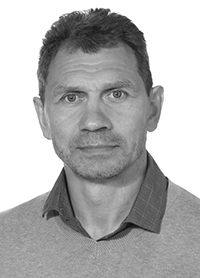INTERVAL TEST TRAINING MODEL FOR JUNIOR MARTIAL ARTISTS
Keywords:
interval training, interval test training, Hyksos tracker, high-intensity training, Tabata protocol workout, Polar H-10 heart monitor, Kicktest-100 dynamic bag, Polar-Team software.Abstract
Objective of the study was to develop and test benefits of a new interval test training method with a progress test scale.
Methods and structure of the study. We were governed by the conceptual ideas of Gershler and Tabat in the new interval test training design. Generally the interval test training time depends on the amplitude and frequency of the pulse wave, with amplitude interpreted as the number of pulse zones with a preset frequency. The key formula is 6 interval test training =8:52, where 6 is the number intervals in an interval test training cycle; amplitude of the pulse zones; and 8:52 is the interval test training time.
The study was run in the period of 09/01/2020 to 04/16/2021 at Tchaikovsky State Academy of Physical Culture where we sampled the 11-12-year-olds from the kickboxing and Thai boxing teams (n=30). We used Polar-10 heart rate monitors with Polar-Team software in the tests. In September we rated the individual heart rate maximums to find that the common formula 220-minus-age applies not to every athlete. The pulse zones were computed by the Polar-Team software automatically for every athlete based on the input heart rate maximums. The interval test training was designed using the following five pulse zones: Zone 1 (gray): 50-59%; Zone 2 (blue): 60-69%; Zone 3 (green): 70-79%; Zone 4 (yellow): 80-89%; and Zone 5 (red): 90-100% of the individual heart rate maximums.
Then we selected the most beneficial formulae for the Thai boxers’ training depending on the training stages.
Results and conclusion. The new interval test training model was tested beneficial as it gives the means to control the load versus the actual individual fitness to prevent health risks. The training formats with application of the Polar-Team heart rate monitors were found to provide special progress motivations since every athlete could track own progress. Practical tests of the new interval test training model showed its benefits for competitive progress as verified, among other things, by the actual competitive accomplishments of the sample in the 2021 Ural-Volga Zone Kickboxing and Thai boxing Championship with the Tchaikovsky State Academy of Physical Culture teams ranked the first and second on the event scoreboard.
References
Ilyin V.Y., Stepanov M.Y., Salamatov M.B. et al. Analysis of pre-season training of Russian national Thai boxing team. Kultura fizicheskaya i zdorovye. 2019. No. 4 (72). pp. 110-114.
Salamatov M.B., Stepanov M.Yu. Hykso trackers to rate technical performance in kickboxing. Fizicheskaya kultura: vospitanie, obrazovanie, trenirovka. 2019. No. 4. pp. 18-21.
Stepanov M.Yu., Salamatov M.B. Speed-strength training method assisted by feedback training machines for 11-13-year-old Muay Thai boxers. Fizicheskaya kultura: vospitanie, obrazovanie, trenirovka. 2019. No. 6. pp. 72-76.
Stepanov M.Y., Salamatov M.B. Analysis of means to form striking actions used in training of junior boxers. Kultura fizicheskaya i zdorovye. 2019. No. 2 (70). pp. 92-95.
Tabata I., Nisimura K., Kuzaki M., Ogita F., Miyachi M., Yamamoto K. Effect of moderate intensity endurance and high intensity intermittent training on anaerobic capacity and VO2max. Mediko-sportivnye uprazhneniya. 1996. October. 28 (10): 1327-30. DOI: 10.1097 00005768-199610000-00018. Available at: https://pubmed.ncbi.nlm.nih.gov/8897392/ (date of access: 12.02.2021 g.).
Tabata I., Irisava K., Kuzaki M., Nisimura K., Ogita F., Miyachi M. Metabolic profile of high-intensity intermittent exercise. Mediko-sportivnye uprazhneniya. 1997. March; 29 (3): 390-5. DOI: 10.1097 00005768-199703000-00015.PMID: 9139179 Available at: https://pubmed.ncbi.nlm.nih.gov/9139179/ (date of access: 12.02.2021)

Published
Versions
- 17-01-2022 (2)
- 01-12-2021 (1)

